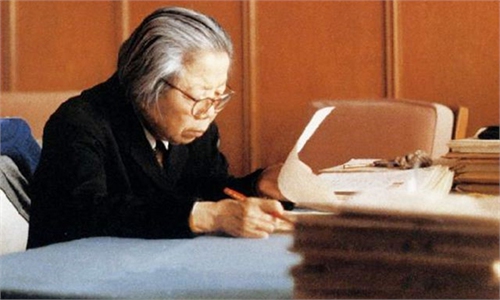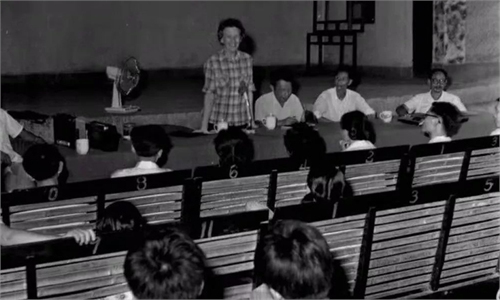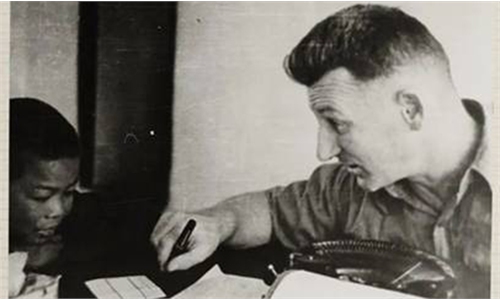From 'Silver Villa' to 'Red Exhibition Hall' — The Restoration of the Historical Site of the Sixth CPC National Congress
The footsteps of history are clear and heavy. In mottled historical relics and precious archives reside memories of the past that wait to be rediscovered. In Pervomayskoye, a village on the outskirts of Moscow, a stately and elegant European-style building attracts many visitors every year, who come to feel the pulse of history. The building, opened to the public in 2016, is the permanent exhibition hall at the site of the Sixth National Congress of the Communist Party of China (CPC).
Built in the 18th century, the structure was known as the "silver villa" for its shiny yellow and white exterior paint. Originally a manor house of a noble in the Tsarist era, it was turned into collective housing and then a state-owned store after World War II, and was nearly burned to the ground after several blazes. Once a witness to the struggle of the CPC, it was gradually deserted, forgotten and faded into the dust of time. In March 2010 when then Chinese Vice President Xi Jinping visited Russia, he and then Russian Prime Minister Vladimir Putin agreed on its restoration, a decision that would restore the site to its former glory.
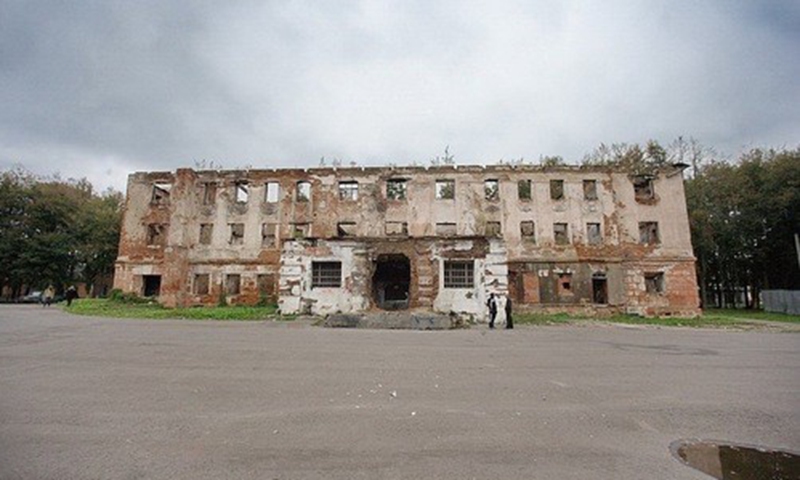
After the failure of the Great Revolution in 1927, China fell into the grip of the White terror. The CPC urgently needed a national congress to review the experience and lessons learned during the Great Revolution and to identify the nature and tasks of the revolution in the new period. At that time however, it was not safe to have the meeting in China. With the help of the people of the Soviet Union and the Communist International, starting late April 1928, more than 100 delegates defied the risk of being arrested by the Kuomintang and traveled to the Soviet Union in different groups. For Pervomayskoye, that was probably the most special time in its history. Between June 18 and July 11, about 100 Chinese were seen walking about in the village, talking and sometimes arguing with one another. There were some well-known faces, such as Zhou Enlai, Su Zhaozheng, Xiang Ying and Cai Hesen. For safety reasons, after the delegates registered, they stopped using their real names and were only identified by numbers.
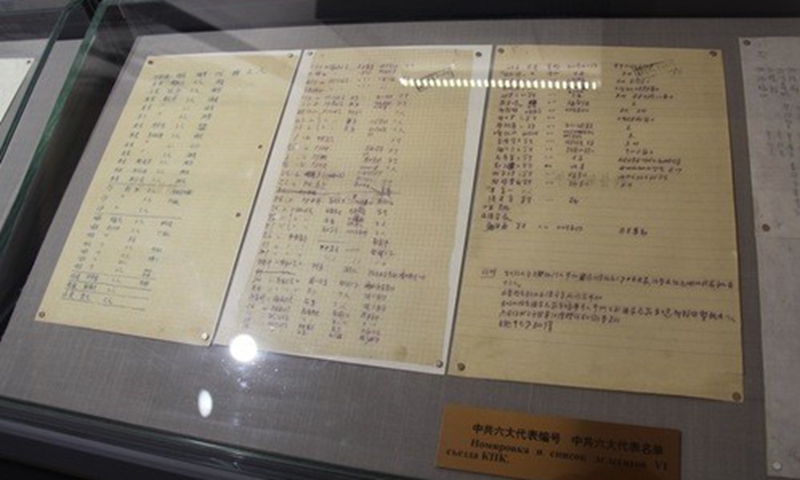
The delegates reviewed the experience and lessons learned in the failure of the Great Revolution, and came up with answers, which later proven to be basically correct, to a series of fundamental questions concerning the Chinese revolution on which there had been serious differences. The Congress solved two major issues that the Party was grappling with. First, on the nature of the Chinese society and revolution, the Congress concluded that China at that stage remained a semi-colonial and semi-feudal society, none of the basic contradictions that caused the Chinese revolution had been resolved, and the Chinese revolution at that stage was still a bourgeois-democratic revolution. Second, on the revolutionary situation and the tasks of the Party, the Congress decided that as the revolution was at a low ebb, the Party's general line was to win over the masses, and the Party's central task was not to stage rebellions at all costs, but to work hard on the masses and gather strength. The resolution of these two important issues unified the Party's thinking, and played a positive role in averting the "Left" tendency in the Party and turning around the work of the Party.
"The CPC, the Chinese government and the Chinese people place great value on the historical event of the Sixth CPC National Congress, and cherish the priceless history of mutual support between the Chinese and Russian people." The preservation of the site of the Congress was brought onto the agenda of the heads of state of the two countries.
In March 2013, during President Xi Jinping's visit to Russia, the two countries signed an additional protocol to the agreement on establishing cultural centers in each other's country, which included a plan to restore the historical site. On the following day, President Xi and Russian Deputy Prime Minister Olga Golodets attended the launching ceremony of the construction of the memorial hall for the Sixth CPC National Congress. President Xi noted at the event that the launching of the construction of the memorial hall was of special significance. On behalf of the CPC, the over 80 million CPC members and 1.3 billion Chinese people, he expressed heartfelt thanks to President Putin and other Russian leaders, and to all Russian friends who have given their attention and support to the project.
In September 2013, representatives of China and Russia signed a 49-year lease contract, with a symbolic rent of one ruble per year. The restoration would be funded by China. Once completed, the compound would be used as a branch of the China Cultural Center in Moscow to hold permanent exhibition on the Sixth CPC National Congress and opened to the public for free.

To ensure the site was fully restored to what it originally looked like, although the building could collapse at any time, the project team of the China Construction First Group Corp used cameras to capture every detail of the historical structure. To speed up the construction process during the long winter time, the team adopted the reverse construction method and other innovative techniques, and wrapped the building with a "giant overcoat" to raise the temperature of the construction site...
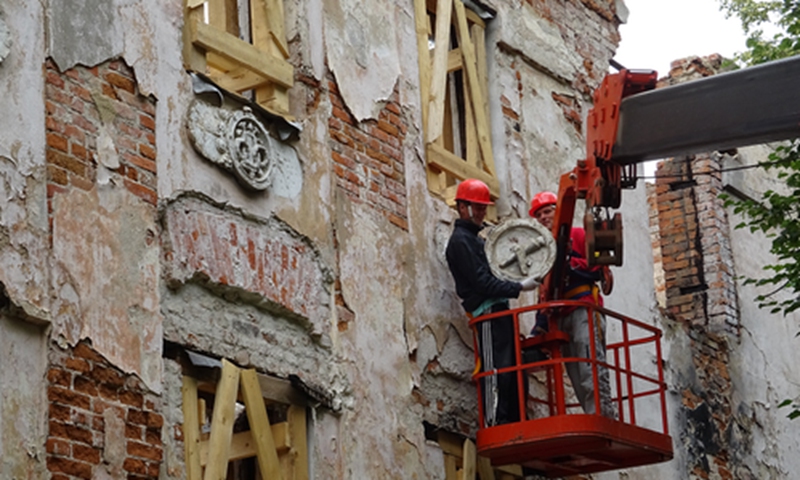
On June 20, 2016, the restoration project passed the completion check by the China-Russia joint team. On July 4, the freshly restored "red exhibition hall" reopened, shining under the blue sky and white clouds like the "silver villa" in the past. Then Chinese Vice Premier Liu Yandong and the Russian Deputy Prime Minister Olga Golodets read the congratulatory messages of President Xi and President Putin respectively, and jointly unveiled the permanent exhibition hall at the site of the Sixth CPC National Congress. From then on, the site has become an overseas education base to help the Chinese people trace the history of the Party and the Chinese revolution and revisit the original aspiration and mission. It offers another venue to enhance friendship, understanding and cultural exchanges between China and Russia. It has also contributed to the development of the Pervomayskoye village. The "red exhibition hall" is now one of the most popular tourist destinations for Chinese tourists in Russia, serving to preserve and carry forward history, the traditional China-Russia friendship and the bond between Chinese and Russian people.
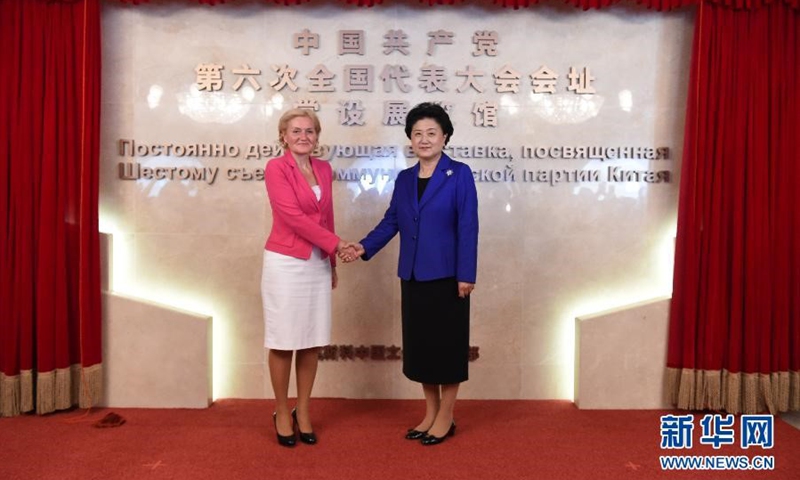
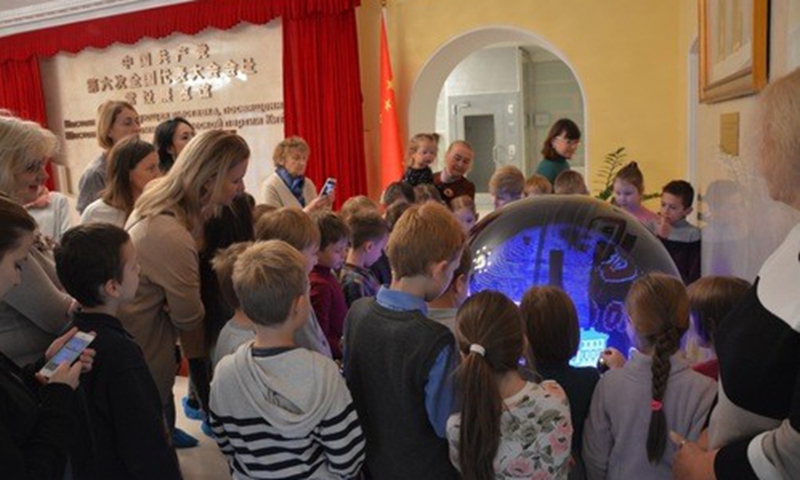
This year marks the 100th anniversary of the founding of the CPC and the 20th anniversary of the signing of the China-Russia Treaty of Good-Neighborliness and Friendly Cooperation.
From the "silver villa" in the past to today's "red exhibition hall", another chapter has been added to the annals of China-Russia friendly exchanges.
Built in the 18th century, the structure was known as the "silver villa" for its shiny yellow and white exterior paint. Originally a manor house of a noble in the Tsarist era, it was turned into collective housing and then a state-owned store after World War II, and was nearly burned to the ground after several blazes. Once a witness to the struggle of the CPC, it was gradually deserted, forgotten and faded into the dust of time. In March 2010 when then Chinese Vice President Xi Jinping visited Russia, he and then Russian Prime Minister Vladimir Putin agreed on its restoration, a decision that would restore the site to its former glory.

Site of the Sixth CPC National Congress before restoration
It was where the CPC had its Sixth CPC National Congress, the only one held overseas in the CPC history and a quite eventful one. "At the time, all the delegates traveled to Moscow by train with the curtains tightly drawn. As soon as they arrived, they were picked up at the platform by buses and cars with curtained windows and whisked through Moscow to the outskirts. This was done in a special operation to make sure that the communists would not get captured or killed," recalled Victor Usov, an expert at the Institute of Far Eastern Studies of the Russian Academy of Sciences, when describing that breathtakingly dangerous journey.After the failure of the Great Revolution in 1927, China fell into the grip of the White terror. The CPC urgently needed a national congress to review the experience and lessons learned during the Great Revolution and to identify the nature and tasks of the revolution in the new period. At that time however, it was not safe to have the meeting in China. With the help of the people of the Soviet Union and the Communist International, starting late April 1928, more than 100 delegates defied the risk of being arrested by the Kuomintang and traveled to the Soviet Union in different groups. For Pervomayskoye, that was probably the most special time in its history. Between June 18 and July 11, about 100 Chinese were seen walking about in the village, talking and sometimes arguing with one another. There were some well-known faces, such as Zhou Enlai, Su Zhaozheng, Xiang Ying and Cai Hesen. For safety reasons, after the delegates registered, they stopped using their real names and were only identified by numbers.

List of delegates to the Sixth CPC National Congress and their numbers (Qu Qiubai was No. 21, Zhou Enlai was No. 22)
In the conference room on the second floor, Nicolai Bukharin, representative of the Communist International, delivered a report entitled "The Chinese Revolution and the Tasks of the Chinese Communists." Qu Qiubai delivered a political report. Zhou Enlai reported on the organizational and military work, Li Lisan gave a report on the issue of peasants...The delegates reviewed the experience and lessons learned in the failure of the Great Revolution, and came up with answers, which later proven to be basically correct, to a series of fundamental questions concerning the Chinese revolution on which there had been serious differences. The Congress solved two major issues that the Party was grappling with. First, on the nature of the Chinese society and revolution, the Congress concluded that China at that stage remained a semi-colonial and semi-feudal society, none of the basic contradictions that caused the Chinese revolution had been resolved, and the Chinese revolution at that stage was still a bourgeois-democratic revolution. Second, on the revolutionary situation and the tasks of the Party, the Congress decided that as the revolution was at a low ebb, the Party's general line was to win over the masses, and the Party's central task was not to stage rebellions at all costs, but to work hard on the masses and gather strength. The resolution of these two important issues unified the Party's thinking, and played a positive role in averting the "Left" tendency in the Party and turning around the work of the Party.
"The CPC, the Chinese government and the Chinese people place great value on the historical event of the Sixth CPC National Congress, and cherish the priceless history of mutual support between the Chinese and Russian people." The preservation of the site of the Congress was brought onto the agenda of the heads of state of the two countries.
In March 2013, during President Xi Jinping's visit to Russia, the two countries signed an additional protocol to the agreement on establishing cultural centers in each other's country, which included a plan to restore the historical site. On the following day, President Xi and Russian Deputy Prime Minister Olga Golodets attended the launching ceremony of the construction of the memorial hall for the Sixth CPC National Congress. President Xi noted at the event that the launching of the construction of the memorial hall was of special significance. On behalf of the CPC, the over 80 million CPC members and 1.3 billion Chinese people, he expressed heartfelt thanks to President Putin and other Russian leaders, and to all Russian friends who have given their attention and support to the project.
In September 2013, representatives of China and Russia signed a 49-year lease contract, with a symbolic rent of one ruble per year. The restoration would be funded by China. Once completed, the compound would be used as a branch of the China Cultural Center in Moscow to hold permanent exhibition on the Sixth CPC National Congress and opened to the public for free.

The silver and white building in the morning light
The project involved more than a dozen departments of the Russian government, including state property management, energy, cadastre and cultural heritage, and governments at the municipal, district and township levels. Then Chinese Ambassador to Russia Li Hui personally coordinated the matter and had written to Deputy Prime Minister Golodets and relevant departments when construction encountered difficulties.To ensure the site was fully restored to what it originally looked like, although the building could collapse at any time, the project team of the China Construction First Group Corp used cameras to capture every detail of the historical structure. To speed up the construction process during the long winter time, the team adopted the reverse construction method and other innovative techniques, and wrapped the building with a "giant overcoat" to raise the temperature of the construction site...

Workers work on the exterior of the site
At the same time, relevant departments, experts on CPC history and historians of the two countries rigorously examined and selected the exhibits of the permanent exhibition. Those with personal experiences also actively helped recall the details. The conference hall, delegates' dormitory and other parts of the building were restored to the original state as much as possible. The exhibits, including a collection of pictures, vividly reproduced the history of the Sixth CPC National Congress.On June 20, 2016, the restoration project passed the completion check by the China-Russia joint team. On July 4, the freshly restored "red exhibition hall" reopened, shining under the blue sky and white clouds like the "silver villa" in the past. Then Chinese Vice Premier Liu Yandong and the Russian Deputy Prime Minister Olga Golodets read the congratulatory messages of President Xi and President Putin respectively, and jointly unveiled the permanent exhibition hall at the site of the Sixth CPC National Congress. From then on, the site has become an overseas education base to help the Chinese people trace the history of the Party and the Chinese revolution and revisit the original aspiration and mission. It offers another venue to enhance friendship, understanding and cultural exchanges between China and Russia. It has also contributed to the development of the Pervomayskoye village. The "red exhibition hall" is now one of the most popular tourist destinations for Chinese tourists in Russia, serving to preserve and carry forward history, the traditional China-Russia friendship and the bond between Chinese and Russian people.

On July 4, 2016, Liu Yandong (right), a member of the Political Bureau of the CPC Central Committee and Vice Premier of the State Council, and Olga Golodets attend the unveiling ceremony of the permanent exhibition hall at the site of the 6th CPC National Congress.

Local elementary school students and their parents visit the exhibition hall
This year marks the 100th anniversary of the founding of the CPC and the 20th anniversary of the signing of the China-Russia Treaty of Good-Neighborliness and Friendly Cooperation.
From the "silver villa" in the past to today's "red exhibition hall", another chapter has been added to the annals of China-Russia friendly exchanges.
